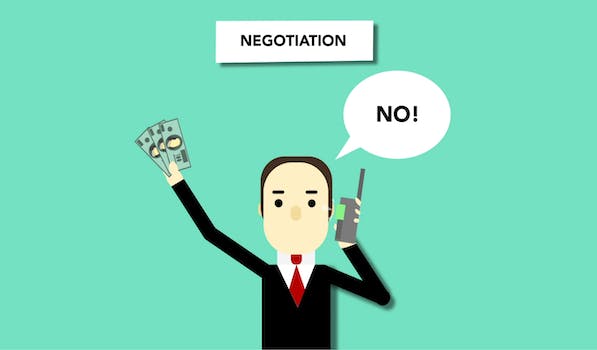How To Save Money In The Business
Cutting Costs: Simple Strategies for Saving Money in Your Business
Running a business can be a costly endeavor, but there are ways to save money without sacrificing quality or productivity. Here are some simple strategies for cutting costs and saving money in your business.
Firstly, consider outsourcing certain tasks. Outsourcing can be a cost-effective way to get work done without having to hire full-time employees. For example, you could outsource your accounting or marketing needs to a freelancer or agency. This can save you money on salaries, benefits, and office space.
Another way to save money is to negotiate with your suppliers. Don’t be afraid to ask for discounts or better pricing. You may be surprised at how willing suppliers are to work with you to keep your business. Additionally, consider buying in bulk to get better pricing. This can be especially effective for office supplies or raw materials.
Next, take a look at your energy usage. Energy costs can add up quickly, but there are ways to reduce them. Consider switching to energy-efficient light bulbs, turning off lights and electronics when not in use, and adjusting the thermostat to save on heating and cooling costs. You could also consider installing solar panels or other renewable energy sources to save money in the long run.
Another way to save money is to streamline your operations. Look for ways to simplify processes and eliminate unnecessary steps. This can save time and money, as well as improve productivity. For example, you could automate certain tasks or use software to manage inventory or customer relationships.
In addition, consider offering flexible work arrangements. This can save money on office space and other overhead costs. For example, you could allow employees to work from home or offer flexible schedules. This can also improve employee satisfaction and retention.
Finally, don’t overlook the importance of employee training and development. Investing in your employees can pay off in the long run by improving productivity and reducing turnover. Additionally, well-trained employees are more likely to provide high-quality work and customer service, which can lead to increased revenue and customer loyalty.
In conclusion, there are many simple strategies for cutting costs and saving money in your business. By outsourcing certain tasks, negotiating with suppliers, reducing energy usage, streamlining operations, offering flexible work arrangements, and investing in employee training and development, you can save money without sacrificing quality or productivity. Remember, every dollar saved is a dollar that can be reinvested in your business to help it grow and thrive.
Maximizing Efficiency: Tips for Streamlining Operations and Reducing Expenses
Running a business can be a costly endeavor, but there are ways to save money without sacrificing quality or productivity. By maximizing efficiency and streamlining operations, businesses can reduce expenses and increase profits. Here are some tips for saving money in the business:
1. Automate Processes
One of the most effective ways to save money in the business is to automate processes. Automation can help reduce labor costs, minimize errors, and increase productivity. For example, businesses can use software to automate tasks such as invoicing, inventory management, and payroll processing. This not only saves time but also reduces the risk of human error.
2. Outsource Non-Core Functions
Another way to save money is to outsource non-core functions. For example, businesses can outsource tasks such as accounting, IT support, and customer service to third-party providers. This can help reduce overhead costs and free up resources to focus on core business functions.
3. Use Cloud-Based Services
Cloud-based services can also help businesses save money. By using cloud-based services, businesses can reduce the need for expensive hardware and software, as well as the associated maintenance costs. Cloud-based services also offer scalability, which means businesses can easily adjust their usage based on their needs.
4. Negotiate with Suppliers
Negotiating with suppliers can also help businesses save money. By negotiating better prices or terms with suppliers, businesses can reduce their costs and increase their profit margins. It’s important to build strong relationships with suppliers and to communicate openly about pricing and terms.
5. Reduce Energy Costs
Reducing energy costs is another way to save money in the business. Businesses can do this by using energy-efficient lighting, equipment, and appliances. They can also implement energy-saving practices such as turning off lights and equipment when not in use, and adjusting the thermostat to reduce heating and cooling costs.
6. Implement Lean Manufacturing
Implementing lean manufacturing can also help businesses save money. Lean manufacturing is a methodology that focuses on reducing waste and increasing efficiency. By implementing lean manufacturing practices, businesses can reduce their costs and improve their productivity.
7. Use Social Media for Marketing
Using social media for marketing can also help businesses save money. Social media platforms such as Facebook, Twitter, and Instagram offer free or low-cost marketing opportunities. By using social media to promote their products or services, businesses can reach a wider audience without spending a lot of money on advertising.
In conclusion, there are many ways to save money in the business. By maximizing efficiency and streamlining operations, businesses can reduce expenses and increase profits. From automating processes to negotiating with suppliers, there are many strategies that businesses can use to save money. By implementing these strategies, businesses can achieve long-term success and growth.
Negotiating with Vendors: How to Get the Best Deals and Save Money on Supplies
As a business owner, one of the most important things you can do is save money. One way to do this is by negotiating with vendors to get the best deals and save money on supplies. Here are some tips on how to negotiate with vendors and save money for your business.
First, do your research. Before you start negotiating with vendors, make sure you know what you need and what the going rate is for those supplies. This will give you a baseline to work from and help you determine what a fair price is. You can also research different vendors to see what they offer and compare prices.
Next, be prepared to negotiate. Vendors are used to negotiating, so don’t be afraid to ask for a better deal. Be clear about what you need and what you’re willing to pay, and be open to compromise. Remember, the goal is to save money, so be willing to walk away if the vendor isn’t willing to work with you.
Another tip is to build a relationship with your vendors. If you have a good relationship with a vendor, they may be more willing to work with you on pricing. This means being a good customer by paying on time, communicating clearly, and being respectful. You can also offer to give them referrals or recommend them to other businesses.
When negotiating with vendors, it’s important to be flexible. This means being open to different payment terms, delivery schedules, and other factors that can affect pricing. For example, if you’re willing to pay upfront or in larger quantities, the vendor may be willing to offer a discount.
You can also negotiate on other factors besides price. For example, you can ask for free shipping or a longer warranty period. These are things that can add value to your purchase and save you money in the long run.
Finally, don’t be afraid to shop around. Just because you’ve been working with a vendor for a long time doesn’t mean they’re the best option. Take the time to research other vendors and compare prices and services. You may find that another vendor offers better pricing or a better selection of products.
In conclusion, negotiating with vendors is an important part of saving money for your business. By doing your research, building relationships, being flexible, and shopping around, you can get the best deals and save money on supplies. Remember, the goal is to find a win-win solution that benefits both you and the vendor. With these tips, you’ll be on your way to saving money and growing your business.
Going Green: Eco-Friendly Practices That Can Save Your Business Money
As a business owner, you’re always looking for ways to save money. One way to do this is by going green. Not only is it good for the environment, but it can also save your business money in the long run. Here are some eco-friendly practices that can help you save money in your business.
1. Switch to LED lights
One of the easiest ways to save money on your energy bill is by switching to LED lights. LED lights use less energy than traditional incandescent bulbs, which means you’ll save money on your electricity bill. Plus, LED lights last longer than traditional bulbs, so you won’t have to replace them as often.
2. Use natural light
Another way to save money on your energy bill is by using natural light. If your office has windows, open the blinds and let the sunlight in. This will not only save you money on your energy bill, but it can also improve your employees’ mood and productivity.
3. Go paperless
Going paperless is not only good for the environment, but it can also save your business money. By eliminating paper, you’ll save money on printing costs, ink, and paper supplies. Plus, you’ll save time by not having to file and organize paper documents.
4. Use energy-efficient appliances
If you’re in the market for new appliances, consider purchasing energy-efficient ones. Energy-efficient appliances use less energy than traditional appliances, which means you’ll save money on your energy bill. Plus, many energy-efficient appliances come with rebates and tax incentives, which can save you even more money.
5. Implement a recycling program
Implementing a recycling program in your office can help you save money on waste disposal costs. By recycling paper, plastic, and other materials, you’ll reduce the amount of waste your business produces. Plus, many recycling programs offer incentives and rebates, which can save you money.
6. Use green cleaning products
Using green cleaning products is not only good for the environment, but it can also save your business money. Green cleaning products are often less expensive than traditional cleaning products, and they’re also safer for your employees and customers.
7. Encourage telecommuting
Encouraging your employees to telecommute can save your business money on office space, utilities, and other expenses. Plus, telecommuting can improve your employees’ work-life balance, which can lead to increased productivity and job satisfaction.
8. Use public transportation
If your employees need to travel for work, encourage them to use public transportation. Public transportation is often less expensive than driving, and it’s also better for the environment. Plus, many cities offer incentives and discounts for businesses that encourage their employees to use public transportation.
In conclusion, going green can save your business money in a variety of ways. By implementing eco-friendly practices like switching to LED lights, using natural light, going paperless, using energy-efficient appliances, implementing a recycling program, using green cleaning products, encouraging telecommuting, and using public transportation, you can reduce your business’s environmental impact and save money at the same time. So why not give it a try? Your wallet and the planet will thank you.
Investing in Technology: Cost-Effective Solutions for Boosting Productivity and Profitability
As a business owner, you are always looking for ways to save money and increase profitability. One area where you can achieve both goals is by investing in technology. With the right tools and software, you can streamline your operations, boost productivity, and reduce costs. In this article, we will explore some cost-effective solutions for investing in technology that can help you save money in the business.
Cloud Computing
One of the most significant technological advancements in recent years is cloud computing. This technology allows you to store and access data and applications over the internet, rather than on your local computer or server. By using cloud computing, you can reduce the need for expensive hardware and software, as well as the associated maintenance costs. Additionally, cloud computing can improve collaboration and communication among your team members, which can lead to increased productivity and efficiency.
Virtual Meetings
Another way to save money on business expenses is by using virtual meetings. With video conferencing software, you can conduct meetings with clients, partners, and team members from anywhere in the world. This eliminates the need for travel, which can be costly and time-consuming. Virtual meetings can also improve communication and collaboration, as participants can share screens, documents, and other resources in real-time.
Automation
Automation is another cost-effective solution for boosting productivity and profitability. By automating repetitive tasks, such as data entry, invoicing, and inventory management, you can free up your team’s time to focus on more critical tasks. Automation can also reduce errors and improve accuracy, which can save you money in the long run. There are many automation tools available, from simple software programs to more complex systems that integrate with your existing software.
Outsourcing
Outsourcing is another way to save money on business expenses. By outsourcing tasks such as accounting, marketing, and customer service, you can reduce the need for in-house staff and associated costs such as salaries, benefits, and office space. Outsourcing can also provide access to specialized expertise and resources that may not be available in-house.
Open-Source Software
Open-source software is another cost-effective solution for investing in technology. Open-source software is free to use and can be customized to meet your specific needs. There are many open-source software programs available, from office productivity tools to website development platforms. By using open-source software, you can reduce the need for expensive proprietary software licenses and associated maintenance costs.
Conclusion
Investing in technology can be a cost-effective way to boost productivity and profitability in your business. By using cloud computing, virtual meetings, automation, outsourcing, and open-source software, you can reduce costs, improve efficiency, and stay competitive in today’s fast-paced business environment. When considering investing in technology, it’s essential to evaluate your specific needs and choose solutions that align with your business goals and budget. With the right technology tools and software, you can save money and achieve success in your business.



